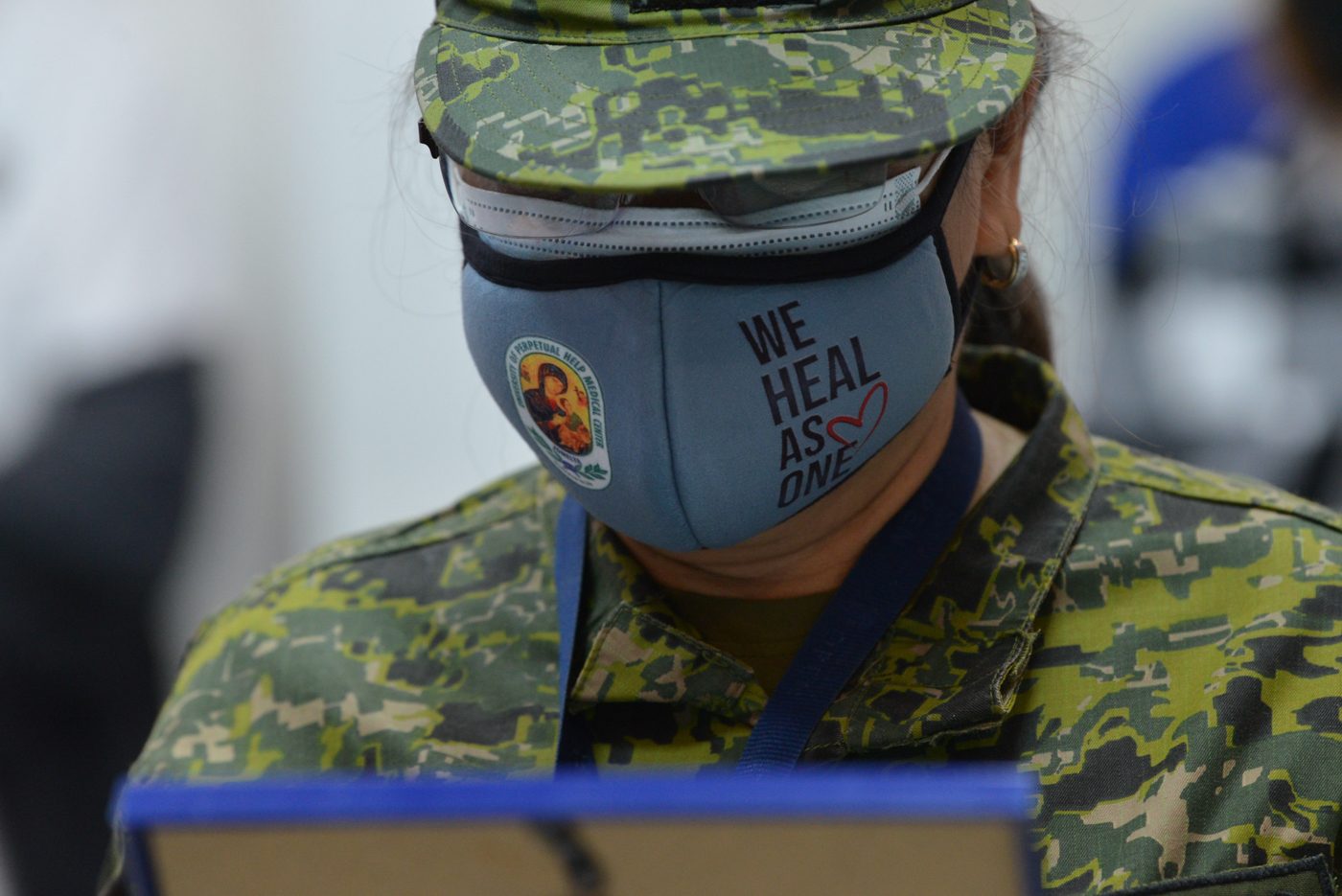SUMMARY
This is AI generated summarization, which may have errors. For context, always refer to the full article.

The Department of Health on Saturday, January 30, said it would not recommend wearing two face masks at the same time as there was not enough evidence that this was effective against the coronavirus.
“Sa ngayon po ay hindi naman ho natin nakikita pa na ang ebidensiyang iyan ay sukat na at sapat na para magsabi na kailangan natin iyan. Makikita ho natin, ito pong paggamit natin ng face mask which provides us about 60% to 70% protection, plus the face shield and physical distance will provide us about 99% protection,” said Health Undersecretary Maria Rosario Vergeire in a Laging Handa briefing.
(As of now we do not see enough evidence to say we need that. We can see that the use of face masks, which provides us about 60% to 70% protection, plus the face shield, and physical distance will provide us about 99% protection.)
“This is what we’ve been doing and it has been working. We’ve seen that we can be able to manage the cases if we keep at it,” she added in Filipino.
Vergeire also said face mask-wearing protocols would remain the same.
How about anal swabs for testing?
Like using double face masks, Vergeire said anal swabs for coronavirus testing would still need to be studied further.
According to the undersecretary, other countries used anal swabs to determine if patients were fit to be discharged from quarantine or a hospital. Anal swabs detect bacteria in fecal material.
“Pero iyong mga pag-aaral po, hindi pa ho sila sukat o hindi pa sila enough para makapagsabi talaga that it is going to be accurate, the same as with the nasopharyngeal swab. So kung saka-sakali po na magkakaroon ng ganiyang pag-aaral na masasabi na accurate din siya, pag-aaralan po natin,” said Vergeire.
(But the studies are not enough to say that it is going to be accurate, the same as with the nasopharyngeal swab. So if there will be a study that will say it is as accurate, we will study the possibility.)
Vergeire said the government is “open” to anal swabs, but the country needs to consider that it would be “very inconvenient for the patient and also for the healthcare worker.”
Studying possibility of 2-variant cases, use of colchicine
Researchers in Brazil discovered patients infected with two different variants of the new coronavirus simultaneously. They posted their findings on January 27.
The DOH said it was studying the same possibility locally. If validated, Vergeire said the government would need to come up with a “more difficult” response to treat patients who test positive for more than one variant.
The undersecretary also said the health department was studying the use of colchicine, a medicine for gout, as a remedy for severe COVID-19 cases. She said there were studies saying the drug lessened chances of death when infected with COVID-19.
But Vergeire reminded the public that the use of colchicine would still have to go through the country’s regulatory process if it would be used against the virus. No manufacturer of the drug has applied for a clinical trial in the country yet.
One year since first case
The Saturday briefing fell on the day a year ago the Philippines detected the first coronavirus case in a 38-year-old woman who traveled to the country from Wuhan, China.
Since that day, more than 523,000 cases have been recorded, and more than 10,000 have died.
Looking back, Vergeire said the challenges the country faced in containing the virus included the imperfect compliance of Filipinos to health protocols. She also highlighted the need to secure the country’s borders.
Can we soon see a relaxing of the whole country into modified general community quarantine (MGCQ), the least restrictive quarantine level? Vergeire said it isn’t impossible.
“Just as long as we can see that the healthcare system has enough capacity, we are able to strengthen and manage it in case there is a surge of cases, and the number of cases would slowly decrease, we can do that. If we all follow health protocols, I think we can achieve [easing quarantine levels],” she said in a mix of English and Filipino.
Metro Manila, Davao City, and 6 other areas are still under GCQ, the second to the least stringent quarantine level, for the month of February. The rest of the country is under MGCQ. – Rappler.com
Add a comment
How does this make you feel?
There are no comments yet. Add your comment to start the conversation.